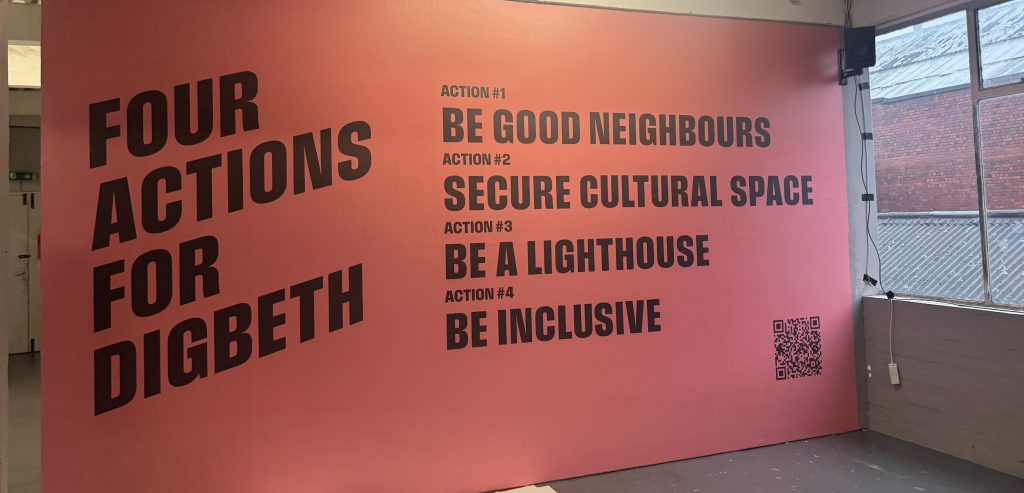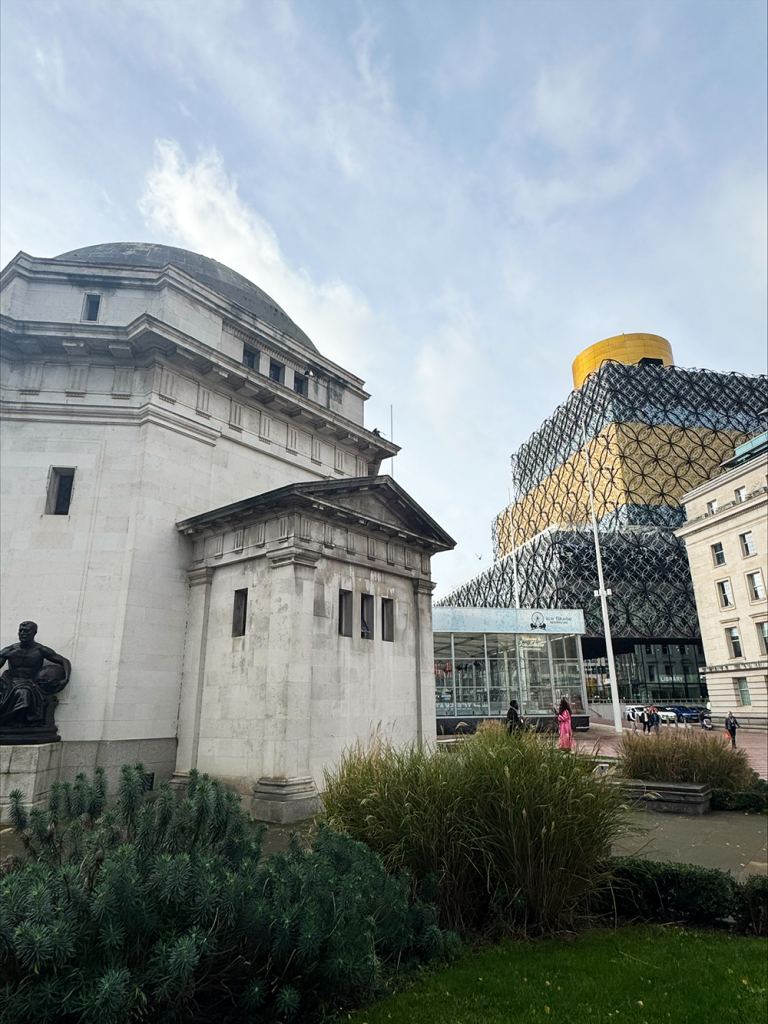
Birmingham is Europe’s youngest city and lies at the heart of the West Midlands Combined Authority (WMCA), one of the most advanced mayoral devolved regions in England. The city is a hub of investment, connectivity and innovation, yet its creative industries (CIs) sit at a crossroads.
As the UK wrestles with widening regional inequalities and new powers shift to mayoral authorities, the Birmingham region of Digbeth has emerged as a living case study for what culture-led regeneration could look like if we get it right, and what it risks becoming if we don’t.
The AHRC Creative Communities programme is exploring the potential of culture as a driver of good growth, social wellbeing, and community cohesion. In Digbeth, these questions are not abstract, but urgent, lived, and unfolding in real time through our strategic investment in Dr Sara Hassan who is leading new research on inclusive innovation and cultural regeneration.
The Great Creative Relocation
Across Digbeth, CI organisations face rising rents, falling revenues, and a precarious workforce. Turnover among creative organisations is high; cultural spaces have been privatised; and pioneers – from video game studios to visual artists – are being pushed out as costs increase.
Yet Digbeth remains rich in creative capital. From Peaky Blinders and Silent Witness to the longstanding presence of Master Chef studios and Digbeth Loc. Studios, the area has proven itself as a production powerhouse. The BBC decision to move 650 staff to a new HQ at the historic Typhoo building signals confidence in the area’s creative potential.
But if Digbeth is to thrive, regeneration cannot become another story of gentrification for the few. It must be a model of inclusive innovation, with creative communities at its core.


Who Is Regeneration For?
Digbeth has a longstanding identity as a safe space for young people and a home for grassroots culture. St Basils, serving young homeless people since the 1960s, sits at the area’s heart. Local organisations welcome the BBC’s arrival, but many worry about the potential displacement of vulnerable communities in favour of new residents in expensive apartment complexes.
Even established institutions are feeling pressure. Grand Union, a key anchor in Digbeth’s cultural ecosystem, saw rents rise 60% after housing redevelopment plans intensified—a reminder that speculation can easily erase the very assets that attracted investment in the first place. No wonder the local slogan “Keep Digbeth Weird” is graffitied everywhere you look.
Culture-led regeneration done right should protect what works, welcome what’s possible, and amplify what’s missing. So how can devolution help this?
Devolution and Cultural Infrastructure
Visions of urban regeneration can often be developer-driven but devolution enables us to factor local public benefit into planning. Planning obligations (section 106), stewardship of public space, and long-term commitments to cultural provision point to devolved opportunities for both Birmingham City Council and WMCA in developing the Digbeth area.
Based in one of the most mature combined authority areas, Digbeth has strong scaffolding, including a proposed BID district and existing Cultural Compact that look set to provide income, accountability and local leadership. Digbeth has also been granted a community activation fund from the council that will fund the activation of community culture projects in Digbeth up to 50k a year for the next ten years. Digbeth will also feature as a key part of the WMCA Spatial Development Strategy, cementing its status as a key site for transversal delivery and sustained growth. Beyond the city, a long-term MoU between the BBC, and WMCA/Birmingham City Council has established a framework for crowding in investment, bolstering the talent pipeline and connect Digbeth to wider opportunities nationally.

But this infrastructure must be matched by actionable intelligence about what already exists. After years of churn and privatisation, there is clear need for a cultural infrastructure plan that maps surviving creative capacity, flags cold spots, and identifies the risks of further leakages of opportunity and talent. A Four Actions for Digbeth Manifesto—rooted in community co-design—is seeking to maintain the area’s authenticity while expanding its potential as a hub for creative production and social innovation through a plan for change that is co-created with, rather than dictated down to, them.
Creative Communities in Practice
The AHRC Creative Communities Programme emphasises that communities thrive when knowledge circulates. You can see this happening already in Digbeth: big investors rely on local creative ecosystems and local organisations gain opportunities through collaboration with larger institutions.
But knowledge exchange must be intentional. This means procuring locally not just for on screen talent, but for the carpenters, sparks, caterers and logistics teams that make the CIs roll. It means embedding culture in planning for broader council and combined authority planning, for everything from homelessness prevention to transport structures and civic architecture. Get this right, and Digbeth will become a co-location model for next-generation regeneration, whereby an anchor institution like the BBC can sit alongside grassroots innovators, with neither displacing the other but adding value both ways.
“Good Growth”
Digbeth’s future will be shaped by the decisions made in the next twelve months. This requires transversal policymaking—linking cultural funding, regeneration policy, skills investment, public health, and housing. Devolution gives the region tools to do this. By seizing a shared ambition to use these tools imaginatively, including through new DCMS Creative Growth Funds and other devolved streams, a new form of devolved place-making is possible.
If Digbeth succeeds, it will offer a blueprint for how devolved English regions can harness culture not as a decorative extra, but as a driver of inclusive regeneration. It will show what’s possible when local authorities and combined authorities work hand-in-hand, recognising that culture delivers on their core priorities—skills, housing, wellbeing, and good growth.
That is the formula of a successful creative community: our investment here will support and catalyse co-creation of the change stakeholders want to see. Watch this space.
Brought to you by


